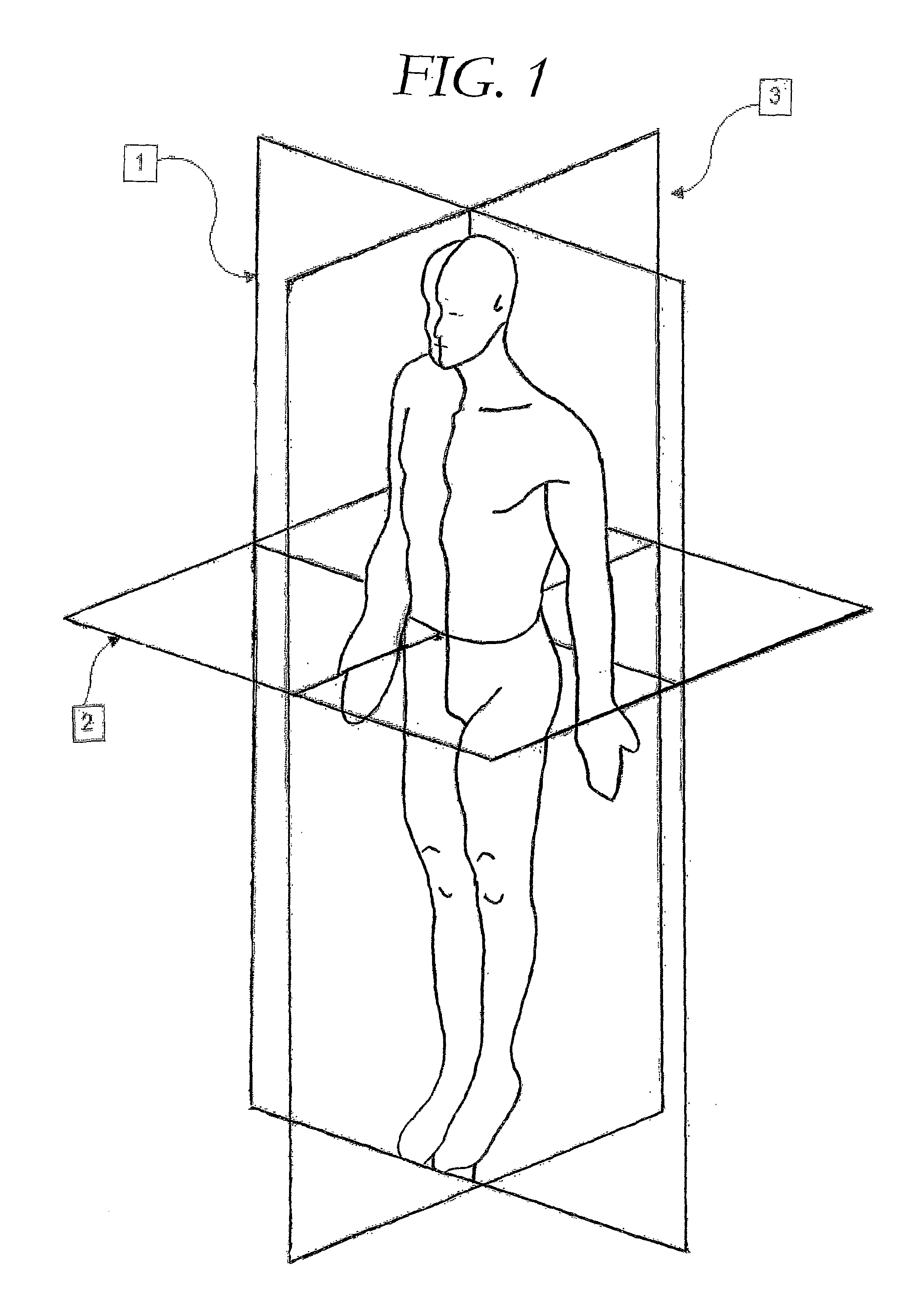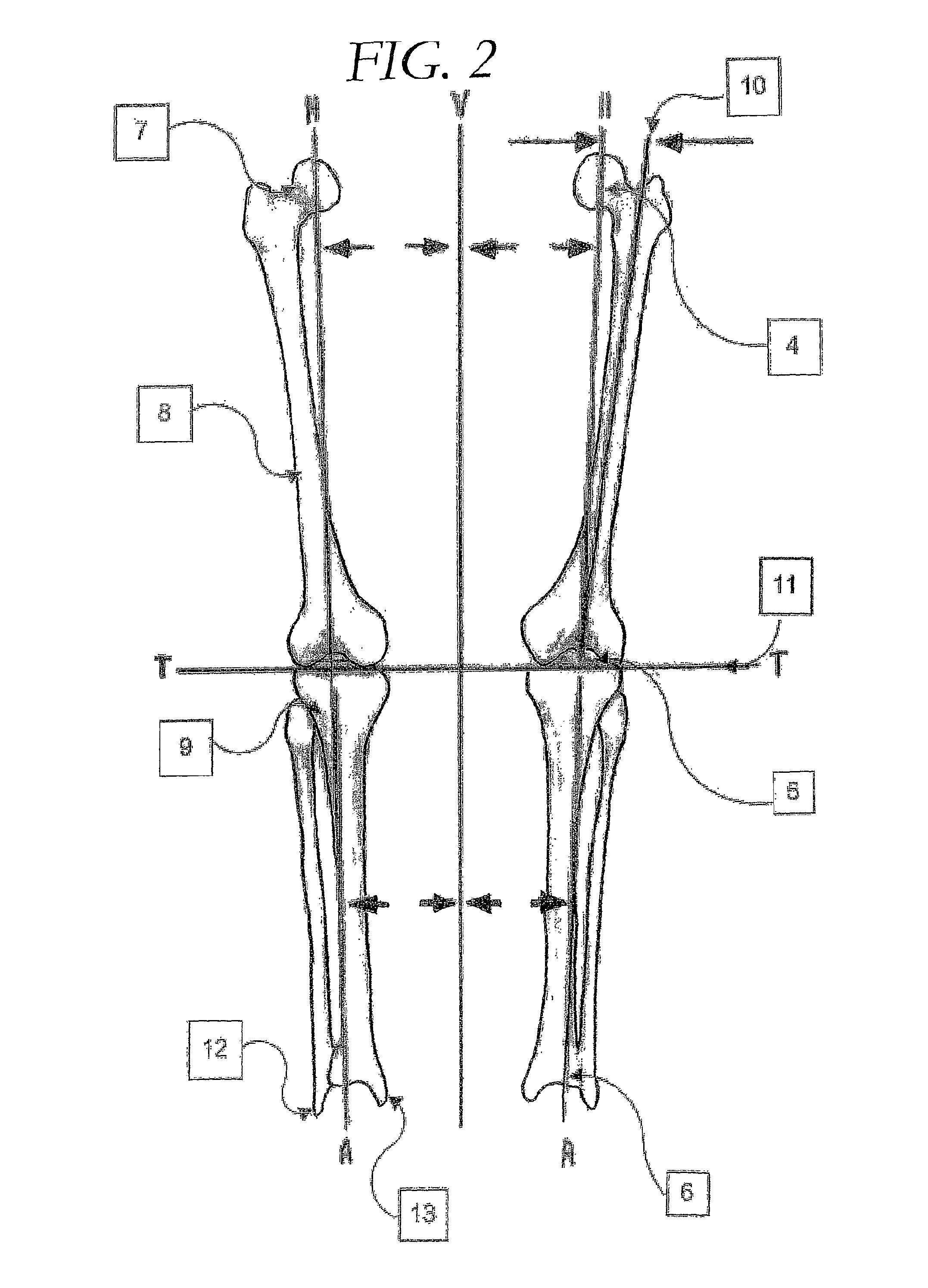Device and method for assisting the alignment of limbs
a technology for applied in the field of assisting the alignment of joints and limbs, can solve the problems of poor function of premature failure of the prosthetic device, the potential for bending of the alignment rod, and the parallax error in the alignment of x-rays, etc., to facilitate the documentation of a medical procedur
- Summary
- Abstract
- Description
- Claims
- Application Information
AI Technical Summary
Benefits of technology
Problems solved by technology
Method used
Image
Examples
Embodiment Construction
[0039]For descriptive purposes the human lower limb will be used as the exemplary application of the invention however this does not exclude application to other joints and limbs in humans or other species.
[0040]The embodiments described provide a method for determination of the centre of rotation of the joint, in this example, the centre of the head of the femur [17].
[0041]The femoral-acetabular articulation provides the origin of the weight bearing mechanical axis [4] of the lower limb.
[0042]The apparatus employs geometric triangulation and the normal anatomical movement of the hip joint, to determine the centre of the hip joint rotation [17] or planar transections through the centre of rotation. A visible light projection device, such as a diode laser line generator, is used to project this alignment in one or more planes to enable the surgeon to make corrections to the alignment of the limb.
Geometric Basis of Function
[0043]The hip, femoral-acetabular arthrosis (FIG. 3) functions...
PUM
 Login to View More
Login to View More Abstract
Description
Claims
Application Information
 Login to View More
Login to View More - R&D
- Intellectual Property
- Life Sciences
- Materials
- Tech Scout
- Unparalleled Data Quality
- Higher Quality Content
- 60% Fewer Hallucinations
Browse by: Latest US Patents, China's latest patents, Technical Efficacy Thesaurus, Application Domain, Technology Topic, Popular Technical Reports.
© 2025 PatSnap. All rights reserved.Legal|Privacy policy|Modern Slavery Act Transparency Statement|Sitemap|About US| Contact US: help@patsnap.com



